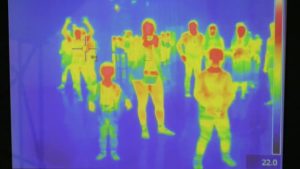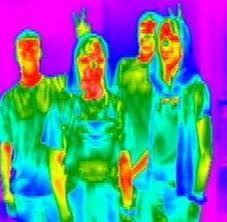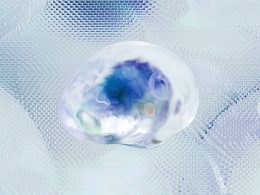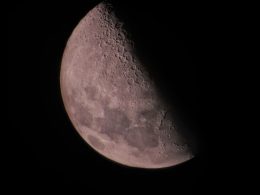Introduction
Thermal imaging is a technology that uses infrared radiation to create images of objects that are invisible to the naked eye. This makes it a valuable tool for a variety of applications, such as military, security, and medical imaging. However, thermal images can often be blurry, due to factors such as camera noise, motion blur, and atmospheric distortion.
In recent years, artificial intelligence (AI) has been used to improve the quality of blurry thermal images. AI algorithms can be used to remove noise, sharpen the image, and correct for distortion. This has led to significant improvements in the accuracy and usefulness of thermal imaging.
In this article, we will discuss how AI can be used to improve blurry thermal images. We will also provide examples of how AI is being used in real-world applications.
How Thermal Pictures Work
Thermal imaging works by detecting the infrared radiation emitted by objects. Infrared radiation is a form of electromagnetic radiation that is invisible to the naked eye. However, it can be detected by special cameras that are sensitive to infrared light.
When an infrared camera captures an image, it creates a heat map of the scene. The warmer the object, the brighter it appears in the image. This allows the camera to see objects that are invisible to the naked eye, such as people in the dark or animals hiding in camouflage.

Why Thermal Pictures Are Often Blurry
There are a number of reasons why thermal images can be blurry. One reason is camera noise. Camera noise is random fluctuations in the signal that is captured by the camera sensor. This noise can cause the image to appear grainy or pixelated.
Another reason why thermal images can be blurry is motion blur. Motion blur occurs when the object that is being imaged is moving during the exposure time. This can cause the image to appear blurred or streaked.
Finally, atmospheric distortion can also cause thermal images to be blurry. Atmospheric distortion is caused by the uneven distribution of water vapor and other gases in the atmosphere. This can cause the image to appear hazy or distorted.
How AI Can Improve Thermal Pictures
AI algorithms can be used to improve the quality of blurry thermal images in a number of ways. One way is to remove noise from the image. AI algorithms can be used to identify and remove noise from the image, resulting in a clearer and more accurate image.
Another way that AI can be used to improve thermal images is to sharpen the image. AI algorithms can be used to identify the edges of objects in the image and enhance them, resulting in a sharper image.
AI algorithms can also be used to correct for distortion in the image. This can be done by using a model of the atmosphere to predict how the image would be distorted and then applying a correction to the image.
Real-World Applications of AI in Thermal Imaging
AI is being used in a variety of real-world applications to improve thermal imaging. Some of these applications include:
- Military and security: AI is being used to improve the accuracy of thermal imaging systems used by the military and security forces. This can help them to detect and track targets more effectively.
- Medical imaging: AI is being used to improve the quality of thermal images used in medical imaging. This can help doctors to diagnose diseases more accurately.
- Industrial inspection: AI is being used to improve the quality of thermal images used to inspect industrial equipment. This can help to identify problems with the equipment before they cause a failure.
- Search and rescue: AI is being used to improve the quality of thermal images used in search and rescue operations. This can help to find people who are lost or trapped in rubble.
Benefits of Using AI to Improve Thermal Imaging
There are a number of benefits to using AI to improve thermal imaging. These benefits include:
- Improved accuracy: AI can help to improve the accuracy of thermal imaging by removing noise, sharpening the image, and correcting for distortion. This can lead to better detection and tracking of targets.
- Improved detection range: AI can help to improve the detection range of thermal imaging systems by removing noise and sharpening the image. This can allow the systems to see objects that are further away.
- Reduced noise: AI can help to reduce the noise in thermal images, resulting in clearer and more accurate images.
- Increased efficiency: AI can help to automate the process of improving thermal images, which can save time and resources.
Conclusion
AI is a powerful tool that can be used to improve the quality of blurry thermal images. This has led to significant improvements in the accuracy and usefulness of thermal imaging in a variety of applications. As AI technology continues to develop, we can expect to see even more impressive












